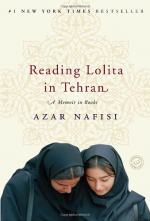
|
| Name: _________________________ | Period: ___________________ |
This test consists of 15 multiple choice questions and 5 short answer questions.
Multiple Choice Questions
1. Why is it so difficult to find a copy of "Lolita" in Tehran?
(a) The book has been banned.
(b) The bookstores are unable to order books with female characters.
(c) The bookstores are closed.
(d) Students prefer to read from photocopies, not books.
2. What is the first assignment for the students in the study group?
(a) To create a secret language using invented words.
(b) To relax and enjoy reading.
(c) To analyze the types of women found in a piece of literature.
(d) To remember what Nafisi taught in her university classes.
3. How does Nafisi feel about revealing herself in class?
(a) As if she were having her insides pulled out.
(b) As if she were being forced to examine herself.
(c) As if she were being undressed in front of strangers.
(d) As if she were surrounded by her best friends.
4. What does Nafisi's study group conclude about "Lolita"?
(a) She was a despicable and shallow girl.
(b) She was a highly desirable but difficult young woman.
(c) She was not the victim she always claimed to be.
(d) She was the victim of two crimes, losing her life and her own life story.
5. At the beginning of Chapter 18, what does Nafisi ask the reader to imagine?
(a) They are inside her apartment.
(b) They are walking down a leafy path.
(c) They are at the university.
(d) They are standing on a street in Tehran.
6. Chapter 12 takes place during which season?
(a) Summer.
(b) Fall.
(c) Winter.
(d) Spring.
7. Where do the intruders to Nafisi's house go once they are in her house?
(a) Into the library.
(b) To the front balcony.
(c) To the rear balcony.
(d) To the kitchen.
8. Why does the literature professor dislike Manna and Nima?
(a) They dislike reading the literature he assigns.
(b) They are not able to write well.
(c) They are falling in love during his class.
(d) They write papers that disagree with his views.
9. What is the best definition of Nabokov's term "poshlust"?
(a) Beauty in the midst of a brutal government regime.
(b) The use of reality to contrast with a system of barbaric ritual.
(c) The ability to remain heroic in the midst of banality and extreme brutality.
(d) Empty rituals, false importance, and the reduction of reality to banality.
10. How does Nabokov's character Cincinnatus C. become a hero?
(a) By fighting off his jailors.
(b) By rescuing those who are falsely imprisoned.
(c) By refusing to be like everyone else.
(d) By giving in to the requirements of the government.
11. Who is Negar?
(a) Nafisi's sister.
(b) Nafisi's daughter.
(c) One of Nafisi's students.
(d) Nafisi's mother.
12. How does Nafisi structure the first class sessions?
(a) Like a lecture class, with the students taking notes on Nafisi's lectures.
(b) With students reading "revolutionary" authors and discussing the parallels to contemporary society.
(c) Like a traditional literature class, with Nafisi asking questions and leading discussions.
(d) With the students leading discussion and choosing what to read.
13. What secret does Nassrin tell Nafisi?
(a) She had been married and divorced.
(b) She was leaving for America.
(c) She had left her family to work for an Islamist student group.
(d) She had been sexually abused by her youngest uncle.
14. What causes Manna and Nima to fall in love?
(a) They see parallels between their lives and the lives of Humbert and Lolita.
(b) They share a passion for the revolutionary cause.
(c) They share a common passion for literature.
(d) They are in the same literature study group.
15. Why is Nafisi worried about her students?
(a) She is concerned that they will be punished by their families for attending her class.
(b) She is worried that they cannot afford the flowers she expects them to bring.
(c) Because her students show no signs of being individuals.
(d) Because the students are not interested in reading and discussing literature.
Short Answer Questions
1. What does the closeness of the room do to Nafisi and her students?
2. How do the students get enough copies of "Lolita" to study?
3. What does Nassrin's mother's teaching symbolize?
4. What is the dream Nafisi and her students share?
5. How does Nafisi describe her memories?
|
This section contains 811 words (approx. 3 pages at 300 words per page) |

|




